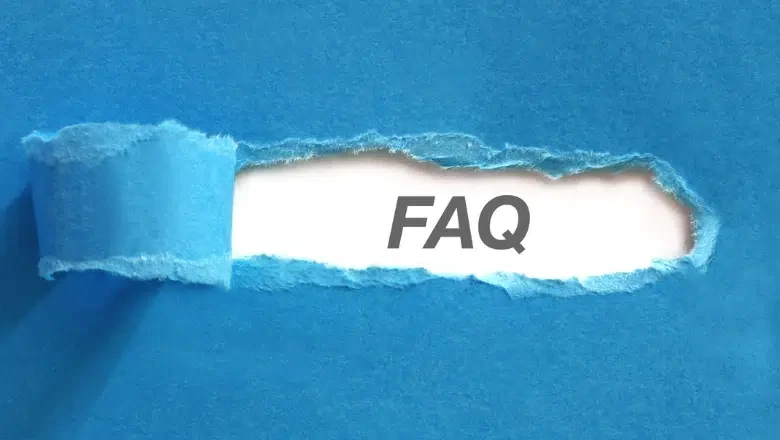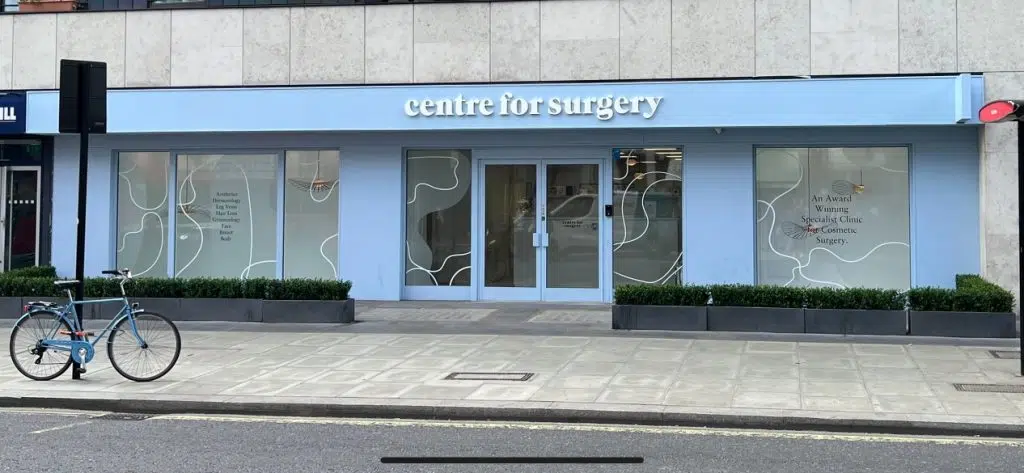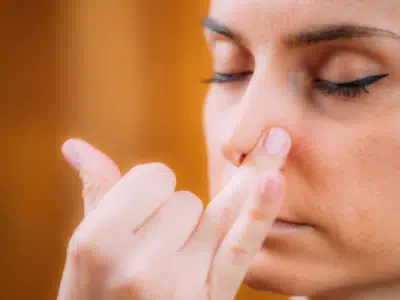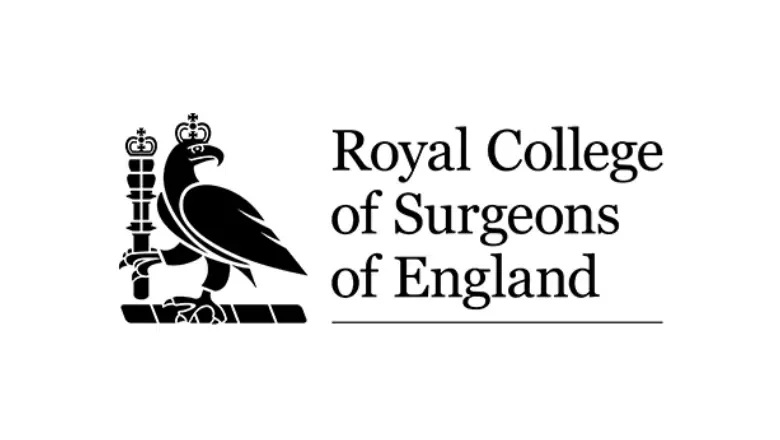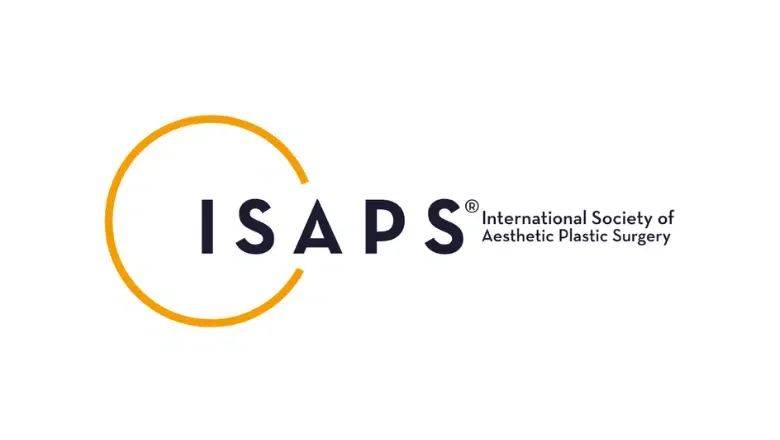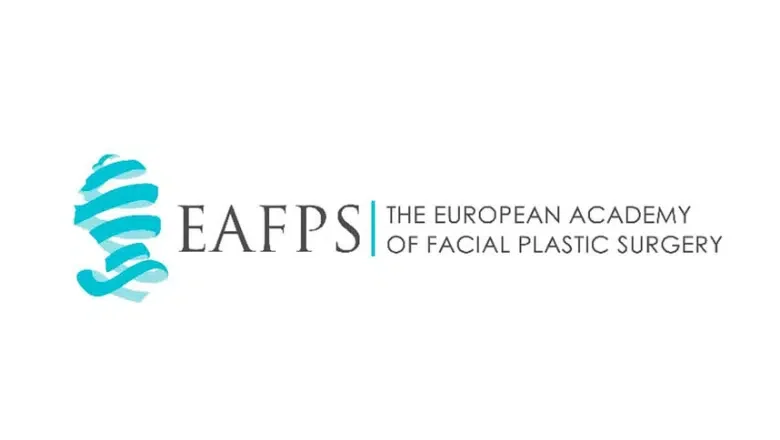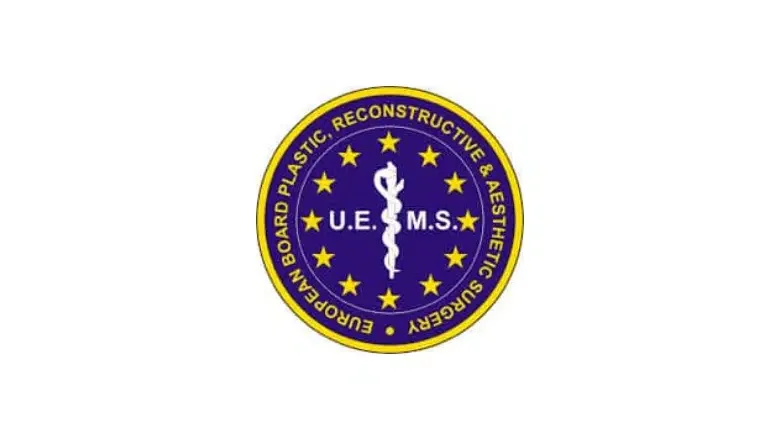How Is Cartilage Graft Used for Rhinoplasty
A nose job that uses added cartilage, also called a cartilage graft rhinoplasty, is a special kind of surgery to change the look and function of your nose. In simple terms, this means taking a bit of cartilage from another part of your body and putting it into your nose to make it look and work better.
Why use cartilage, you ask? Well, cartilage is super useful in nose jobs because it gives the nose more strength, helps to shape it, and makes it stable. You can take this cartilage from various places in your own body like your ribcage, the divider in the middle of your nose called the septum, or even your ears.
At Centre for Surgery, our top-notch plastic surgeons in London are experts at doing these kinds of nose surgeries. We’re experienced in using cartilage to tackle a range of both beauty and functional issues people might have with their noses.
RELATED: What Nose Shape Concerns Can Rhinoplasty Correct?
What Is Cartilage?
Cartilage is a special kind of tissue that’s found in many different areas of your body. Think of it as a sturdy but bendy material that helps to hold things in place and allows your joints to move smoothly. Unlike bones, cartilage doesn’t have any blood vessels or nerves, which gives it a smooth, rubbery feel.
Picture something that’s strong but also has a bit of give, almost like a soft pillow that sits between your bones. This allows them to slide over each other easily when you move. That’s what cartilage does—it offers both strength and flexibility, making it crucial for things like your joints, nose, and ears. It helps to keep our bodies running smoothly, providing both stability and the freedom to move.
The Many Benefits of Using Cartilage Grafts in Nose Jobs
Having a nose job that involves cartilage grafts offers a whole range of advantages, making it a popular choice for those looking to improve both how their nose looks and how it functions. Here are some of the key benefits in greater detail:
- A More Balanced and Attractive Nose: One of the standout advantages of using cartilage grafts in a nose job is that it allows for detailed reshaping and sculpting of the nose. This means you can get a nose that’s more symmetrical and complements your facial features better. Whether you’re looking to finesse the tip of your nose, straighten the bridge, or just bring everything into better balance, cartilage grafts can be precisely positioned to achieve your aesthetic goals.
- Added Strength and Durability: Cartilage grafts give your nose extra support, making it more stable and structurally sound for the long term. This is especially helpful if you have naturally weak nasal cartilage or if you’ve had previous nose surgeries that weakened the structure of your nose.
- Natural Look and Feel: Because cartilage grafts are taken from your own body, they blend in really well with the existing structure of your nose. This leads to results that look and feel completely natural. You won’t have to worry about your nose looking like it’s been “worked on” because the grafts seamlessly integrate with your own tissues.
- Long-Lasting Results: Unlike some temporary fixes like fillers, which may need to be redone over time, cartilage grafts provide a more permanent solution. They keep their shape well and offer stable, long-lasting results. This means you can enjoy your new nose for years to come, without the need for constant touch-ups.
- Better Breathing and Airflow: Beyond just making your nose look better, cartilage grafts can also improve how it works. If you have issues like a deviated septum or collapsed nasal valves, cartilage grafts can be used to fix these structural problems. This can help to make breathing easier and improve the overall airflow through your nose.
When Is Nose Cartilage Grafting Needed?
Nose cartilage grafting is a surgical procedure that involves taking cartilage from one area of the body and using it to reshape or reinforce the nose. There are several situations where nose cartilage grafting may be needed to achieve the desired aesthetic or functional outcome. Here are some of the most common reasons why a plastic surgeon might recommend nose cartilage grafting:
- Nasal bridge augmentation: Some patients may have a flatter or less defined nasal bridge due to genetics or previous injury. In these cases, a surgeon may recommend using cartilage grafting to build up the bridge and create a more aesthetically pleasing shape. The cartilage can be taken from the patient’s own body (such as the ear or rib) or from a donor source. Nasal bridge augmentation is commonly used as part of an ethnic rhinoplasty procedure.
- Tip refinement: Patients who have a bulbous or droopy nasal tip may benefit from cartilage grafting to refine the shape of the tip. This procedure can be particularly helpful for patients with thicker skin or weaker cartilage support. The graft can be placed underneath the tip to provide additional structure and support, leading to a more defined and proportionate appearance.
- Correcting asymmetry: Some patients may have a crooked or asymmetrical nose due to genetics or previous injury. In these cases, a surgeon may use cartilage grafting to help correct the asymmetry and create a more balanced appearance. The graft can be used to build up one side of the nose to match the other, or to help straighten the nose as needed.
- Correcting functional issues: In addition to cosmetic concerns, some patients may require nose cartilage grafting to correct functional issues such as breathing problems. For example, patients with a deviated septum may require a septoplasty to straighten the nasal septum and improve airflow. In some cases, cartilage grafting may also be needed to reinforce the nasal structure and prevent collapse during breathing.
- Revision rhinoplasty: Patients who have undergone previous rhinoplasty surgeries may require cartilage grafting to correct deformities or asymmetries that were not corrected with the initial procedure. The graft can help provide additional support and structure to the nose, leading to a more aesthetically pleasing outcome.
What Are the 3 Sources Of Nose Grafts?
In rhinoplasty, a graft is a piece of tissue that is harvested from one part of the body and then used to support, shape or augment the nasal structures. There are different types of grafts that can be used in rhinoplasty, including bone grafts, cartilage grafts, and soft tissue grafts. In this answer, we will focus on the three sources of nose grafts that are commonly used in rhinoplasty procedures: nasal septum, ear, and rib.
Nasal Septum Graft
The nasal septum is the wall of cartilage and bone that divides the nasal cavity into two halves. The septum is an excellent source of cartilage for grafting in rhinoplasty because it is easily accessible, and harvesting it does not result in visible scarring. Additionally, using the patient’s own tissue (autologous grafting) eliminates the risk of rejection or allergic reactions.
A septal cartilage graft can be used to provide structural support for the nose, to reshape the nasal tip or the bridge, or to correct a deviated septum. Harvesting the septum requires a small incision inside the nose, and the cartilage is then sculpted to the desired shape before being inserted into the appropriate location.
Ear Cartilage Graft
Ear cartilage is another common source of graft material in rhinoplasty. The cartilage in the ear is relatively strong and malleable, making it a good choice for shaping the nasal tip or reconstructing the nose. Additionally, the ear cartilage is usually readily available and can be harvested with minimal scarring.
During the procedure, a small incision is made behind the ear to expose the cartilage. The cartilage is then harvested, sculpted, and inserted into the nose.
Rib Cartilage Graft
Rib cartilage is a versatile source of graft material that can be used for large-volume nasal reconstruction or to correct deformities that are difficult to correct with other graft materials. Rib cartilage is most commonly used in secondary or revision rhinoplasty procedures where previous surgeries have caused significant damage to the nasal structure.
Harvesting rib cartilage requires a small incision in the chest area, which can result in a visible scar. However, the cartilage can be harvested in sufficient amounts to provide the necessary support or volume to the nose.
Each of these sources has its advantages and disadvantages, and the choice of which graft to use will depend on the specific needs of the patient and the goals of the surgery.
What types of nose deformity can be fixed with a cartilage graft nose job?
A cartilage graft nose job, or rhinoplasty, is a surgical procedure that involves using cartilage grafts to improve the shape, function, or both of the nose. The procedure is often used to correct a variety of nose deformities. Here are some common types of nose deformities that can be fixed with a cartilage graft nose job:
- Saddle nose deformity: A saddle nose deformity is characterised by a flat, depressed bridge of the nose. It can be caused by trauma, congenital defects, or a previous rhinoplasty. A cartilage graft nose job can be used to build up the bridge of the nose, restoring a more natural appearance and improving breathing.
- Crooked nose deformity: A crooked nose deformity is characterised by a nose that appears twisted or off-centre. This can be caused by trauma, birth defects, or previous rhinoplasty. A cartilage graft nose job can be used to straighten the nose by repositioning or replacing damaged cartilage.
- Bulbous tip deformity: A bulbous tip deformity is characterized by a rounded or enlarged tip of the nose. This can be caused by genetics or previous rhinoplasty. A cartilage graft nose job can be used to reshape and refine the tip of the nose, creating a more aesthetically pleasing appearance.
- Pinched tip deformity: A pinched tip deformity is characterized by a narrow, constricted appearance of the nasal tip. This can be caused by previous rhinoplasty, injury, or genetics. A cartilage graft nose job can be used to widen and support the nasal tip, creating a more natural appearance.
- Deviated septum: A deviated septum is a common condition where the nasal septum, or the thin wall of cartilage between the nostrils, is crooked or off-centre. This can cause breathing difficulties, snoring, or sleep apnea. A cartilage graft nose job can be used to straighten the nasal septum and improve breathing.
- Collapsed nostrils: Collapsed nostrils can be caused by trauma, genetics, or previous rhinoplasty. This can result in difficulty breathing or an unsightly appearance of the nostrils. A cartilage graft nose job can be used to support the nostrils and improve breathing while restoring a more natural appearance.
- Uneven nostrils: Uneven nostrils can be caused by a variety of factors, including genetics, previous surgery, or injury. A cartilage graft nose job can be used to reshape the nostrils and improve symmetry.
Comparing Techniques: Cartilage Graft Nose Jobs vs. Traditional Rhinoplasty vs. Non-Surgical Options
If you’re contemplating reshaping your nose, weighing the pros and cons of the different methods available is crucial. Here, we’ll discuss how cartilage graft nose jobs compare to traditional rhinoplasty and non-surgical alternatives, focusing on their respective benefits and limitations.
Cartilage Graft Nose Jobs
Benefits
- Precision and Natural Appearance: The use of cartilage grafts enables very precise and natural-looking adjustments to the shape of your nose.
- Durability and Support: Cartilage grafts offer enhanced structural support, which means you can expect long-lasting results.
- Functional Improvements: These grafts can also fix functional issues like breathing difficulties, giving you a nose that not only looks better but works better too.
Limitations
- Recovery Time: Being an invasive surgical procedure, you’ll need time to recover.
- Surgical Risks: Like any surgery, there’s the potential for complications such as bleeding or infection.
- Expertise Required: This method needs a highly skilled surgeon familiar with cartilage grafting techniques.
Traditional Rhinoplasty Methods
Benefits
- Comprehensive Reshaping: This approach allows for significant changes, both in terms of your nose’s aesthetic and its underlying structure.
- Permanent Results: The changes are long-lasting and don’t require ongoing maintenance.
Limitations
- Extended Recovery: It’s an invasive procedure that typically has a longer recovery period compared to non-surgical options.
- Scarring Risks: The invasive nature could lead to more noticeable scarring.
- Anesthesia and Pre-Op Evaluation: Requires general anaesthesia and a thorough pre-operative assessment.
Non-Surgical Nose Reshaping Options (Liquid Rhinoplasty & Nose Thread Lift)
Benefits
- Quick and Simple: These are generally non-invasive or minimally invasive procedures with little to no downtime.
- Flexibility: The temporary nature of the results means you can change your mind and adjust the outcome.
- Lower Risk: With no surgery, the risks and complications are generally less significant.
Limitations
- Limited Scope: These methods can’t make major structural changes to your nose.
- Temporary Results: You’ll need periodic touch-ups to maintain the look.
- Not for Everyone: May not be suitable if you have more significant deformities or functional issues with your nose.
Cartilage Nose Grafts vs Silicone Nasal Implants – which is better?
The choice between cartilage grafts and silicone implants for rhinoplasty depends on the individual patient’s needs, goals, and anatomy. Both options have their advantages and disadvantages.
Cartilage grafts are typically taken from the patient’s own body, usually from the nose septum, ear, or rib. This can reduce the risk of rejection, infection, or other complications associated with foreign materials. Cartilage grafts can also provide a natural-looking and long-lasting result, as the graft can integrate into the surrounding tissues over time. However, cartilage grafts can be more difficult to shape and position compared to silicone implants, and may require more surgical time and expertise.
Silicone implants, on the other hand, are pre-formed and can be easier to shape and position during surgery. They can also be less expensive than cartilage grafts and require less surgical time. However, silicone implants can carry a higher risk of infection, extrusion, or shifting, especially if they are not placed correctly or if they are not properly maintained over time. Additionally, silicone implants can look less natural compared to cartilage grafts, and may require replacement or removal over time. We do not offer silicone implants at Centre for Surgery.
Cartilage Grafting Nose Job FAQs
Is cartilage removed during rhinoplasty?
Cartilage may be removed during rhinoplasty if the goal of the surgery is to reduce the size of the nose or correct certain structural issues. However, in many cases, cartilage is actually added to the nose to build up or support the nasal structure.
During rhinoplasty, the surgeon may make incisions in the nose to access the underlying cartilage and bone. Depending on the patient’s anatomy and the goals of the surgery, the surgeon may remove or reshape portions of the cartilage to achieve the desired result. For example, if the nasal tip is too large or bulbous, the surgeon may remove or reshape the lower lateral cartilage in order to refine the tip. Similarly, if the nasal bridge is too wide, the surgeon may remove or narrow the upper lateral cartilages to achieve a more aesthetically pleasing appearance.
However, in many cases, cartilage is added to the nose during rhinoplasty to improve the shape, function, or both. Cartilage grafts may be harvested from other areas of the body, such as the septum, ear, or rib, and used to build up or support the nasal structure. This can be especially important for patients with weakened or damaged cartilage due to injury, previous surgery, or other factors.
Is ear or rib cartilage better for rhinoplasty?
The choice between ear or rib cartilage for rhinoplasty depends on the individual patient’s needs and anatomy. Both options have their advantages and disadvantages.
Ear cartilage is a common choice for rhinoplasty, especially for patients who need small to moderate amounts of cartilage for reshaping or support. Ear cartilage can be harvested from the back of the ear, leaving a hidden scar. It is typically flexible, making it easier to shape and position during surgery. However, ear cartilage can be thin and may not provide enough support for more complex or extensive nose reshaping.
Rib cartilage is another option for rhinoplasty, especially for patients who need larger amounts of cartilage for building up the nasal bridge or tip. Rib cartilage is typically harvested from the patient’s own rib, leaving a visible scar at the donor site. It is thicker and stronger than ear cartilage, making it suitable for more complex or extensive nose reshaping. However, rib cartilage can be more difficult to shape and position during surgery, and may require more surgical time and expertise.
Are Cartilage Grafts Suitable for Everyone?
While generally safe, cartilage grafts aren’t for everyone. If you’ve had prior nasal surgeries or have significant deformities, these could affect whether grafts are a good option for you. Consult with an expert plastic surgeon at Centre for Surgery to assess your individual needs.
Does cartilage grow after rhinoplasty?
During rhinoplasty, cartilage grafts can be taken from other areas of the body, such as the septum, ear, or rib, and used to reshape or support the nose. Over time, these cartilage grafts can integrate into the surrounding tissues and become more stable. This can result in subtle changes to the shape or position of the nose as the grafts settle into their new location and become more closely integrated with the natural tissues.
When Can I Get Back to Normal Life After Cartilage Nose Grafting?
Returning to your regular routine after getting a cartilage graft nose job varies from person to person. Your healing speed and the complexity of your surgery are key factors. Here’s what you can generally expect:
Just After Surgery: Right after the operation, it’s downtime for you. Expect some swelling, facial bruising, and general discomfort.
First Week: It’s wise to take the first week off work or school to let your body focus on healing. Say no to any high-energy activities like exercise or anything that might put your nose at risk.
Week Two: As you enter week two, things like swelling should start to improve. You’ll probably have a check-up with your surgeon around this time. Light activities are okay now, but still avoid putting any strain on your nose.
Weeks 3-4: You can slowly get back to more of your normal routine. Still, steer clear of contact sports or anything that might accidentally bump or harm your nose.
Weeks 4-6 and Onwards: By now, you can usually jump back into your full range of activities, including sports, as long as your surgeon gives you the green light. However, keep being cautious with your nose to prevent any accidental harm.
How Long Will the Results of Cartilage Graft Rhinoplasty Last?
The outcomes of a cartilage graft nose job are built to last. The grafts offer solid support, helping your newly shaped nose keep its form for the long haul. Yet, age and other natural factors could still alter your nose over the years.
Can I Combine This with Other Cosmetic Surgeries?
Absolutely, you can mix a cartilage graft nose job with other aesthetic procedures like chin or lip enhancement, or eyelid surgery. You’ll be assessed individually to ensure you’re a good candidate for multiple procedures.
Will It Hurt?
You won’t feel a thing during the surgery, thanks to anaesthesia. Post-op, it’s common to have some soreness, along with swelling and bruising.
What Risks Are Involved with Cartilage Graft Nose Jobs?
Like any surgery, this one comes with its own set of risks — from infection and bleeding to anaesthetic reactions or scarring. You might also not be thrilled with how your new nose looks. It’s crucial to weigh these risks against the benefits and follow your surgeon’s aftercare guidelines for a smooth recovery.
Cartilage Graft Nose Job at Centre for Surgery: Where Expertise Meets Excellence
If you’re considering a cartilage graft nose job, look no further than Centre for Surgery. Located in the heart of London, our clinic is home to some of the UK’s most renowned plastic surgeons with extensive experience in nose procedures.
Why Choose Us?
We don’t just offer surgical procedures; we offer transformations. Our commitment to patient care and excellence is unwavering, making us a leader in the field of plastic surgery. To learn more about why we stand out, please visit our About Us page.
Finance Options
Worried about the cost? We’ve got you covered. With our 0% APR with Chrysalis Finance, we make it easier for you to take the next step towards the new you. Find out more about our finance options here.
Further Reading
Want to delve deeper? Our Plastic Surgery Blog offers invaluable insights and updates on the world of cosmetic surgery. Also, you can check out our Clinic FAQs for commonly asked questions about cartilage graft nose jobs and other procedures.
Our Locations
We are conveniently situated at 95-97 Baker Street, London. More details about our Baker Street clinic can be found here.
What Our Patients Say
- Testimonial 1: “The level of care I received at Centre for Surgery was unparalleled. The staff made me feel comfortable from consultation to post-op. My nose looks amazing and the results are so natural!” – Emily, 32
- Testimonial 2: “I couldn’t be happier with my results. My breathing has improved and aesthetically, I finally have the nose I always wanted. The surgeons are true artists.” – Mark, 40
- Testimonial 3: “Not only was the entire process smooth, but the finance options made it affordable for me. I have regained my confidence and would recommend Centre for Surgery to anyone!” – Sarah, 28
Book Your Consultation Today
Ready to take the next step? Don’t hesitate to get in touch with us for a consultation.
- Phone: 0207 993 4849
- Email: contact@centreforsurgery.com
- Contact Us Form: Click here to reach us
Centre for Surgery offers a perfect blend of expertise, patient-focused care, and options to make the procedure accessible. Your dream transformation is just a call or click away!

